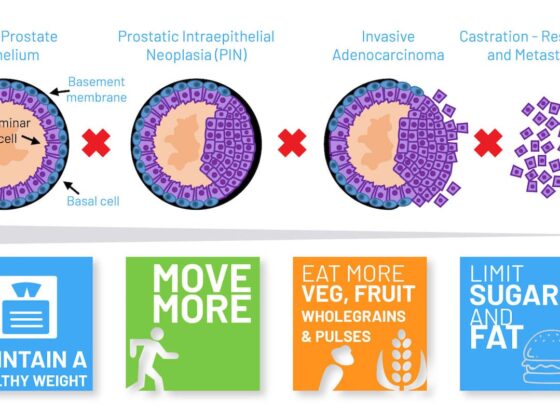Two recent publications highlight the growing interest of drug repurposing in oncology. A study in Cancer Prevention Research (published online 12 April) shows how dopamine can stop the development and progression of ultraviolet B (UVB)-induced precancerous squamous skin cancers; while a study in Alzheimer’s Dementia (published online 17 March) reports that the cancer drug sargramostim may offer a novel approach for tackling Alzheimer’s disease.
Repurposing of ‘old drugs’, also known as drug repositioning, to treat cancer is growing in popularity. But there are also possibilities that cancer drugs could be used to combat other conditions. An undoubted advantage of drug repurposing is that the pharmacokinetic, pharmacodynamic, and toxicity profiles of the drugs have already been established in the original preclinical and phase I studies, allowing agents to be rapidly progressed into phase II and phase III clinical studies. The overall result is that the drugs are less risky to develop, and involve lower costs and shorter time frames.
Dopamine, in addition to its role in the nervous system, is known to regulate critical physiological and pathological processes in the periphery by acting through D1 and D2 receptors present on cells. Although dopamine had been reported to regulate vascular-endothelial-growth-factor (VEGF)-induced angiogenesis (and thereby growth of well-established human malignant tumours of the stomach, breast and colon), its role in premalignant lesions is unknown. In the study, Sujit Basu (Ohio State University Comprehensive Cancer Center, Columbus) and colleagues set out to explore whether dopamine plays a role regulating VEGF-A-induced angiogenesis in the pathogenesis and progression of premalignant cutaneous squamous cell lesions.
For the study, mice with premalignant skin lesions induced through chronic UVB irradiation were randomised to receive one of three treatments: vehicle treated control, treatment with selective dopamine D2 receptor agonist (quinpirole), and treatment with the dopamine D2 receptor antagonist (eticlopride). Skin tumours >1mm were assessed and measured with callipers prior to first treatment and then on alternate days throughout the study.
Results showed stimulation of dopamine D2 receptors with quinpirole in comparison to vehicle-treated controls significantly reduced the number of cutaneous tumours and tumour burden in the mice (P<0.05). Additionally, the investigators found D2 receptor agonists inhibited VEGF-dependent proangiogenic genes both in vitro and in vivo. The team also showed that, for mice pre-treated with selective dopamine D2 receptor antagonists, the effects of the agonist were inhibited, suggesting beneficial actions of dopamine are exerted through D2 receptors in endothelial cells.
The study, write the authors, is the first to report dopamine acts as ‘an angiogenic switch’ to inhibit development and progression of UVB-induced skin lesions. “Our study suggests that a commonly used drug that activates specific dopamine receptors could help reduce squamous cell skin cancer recurrence and possibly even prevent the disease entirely. This is especially exciting because this is a drug that is already readily used in clinical settings and is relatively inexpensive,” says Basu in a press release.
In a separate development, a trial by Huntington Potter (University of Colorado School of Medicine) explored sargramostim, also known as granulocyte-macrophage colony stimulating factor (GM-CSF), for treatment of Alzheimer’s disease. Sargramostim is most commonly used in oncology, to accelerate the recovery of white blood cells following chemotherapy. The rationale for the current study came from earlier observations that leukaemia patients undergoing short-term treatment with recombinant sargramostim as supportive therapy after high-dose chemotherapy and haematopoietic cell transplantation showed significant improvement in cognition at six months compared to those receiving no treatment. Furthermore, in neurological injury and disease, sargramostim has been shown to have anti-apoptotic effects on neurons, to promote neurogenesis and arteriogenesis, to reduce formation of glial scars and to exhibit reduced levels in cerebrospinal fluid of Alzheimer’s disease patients.
In the current study 40 patients with mild to moderate Alzheimer’s disease (defined by Mini-Mental State Examination Scores of 10 to 26) were randomised to receive sargramostim by subcutaneous injection for five days a week over three weeks (n=20) or saline placebo injections for five days a week over three weeks (n=20). Patients were followed up at 45 and 90 days.
Results showed, at the end of treatment, the Mini-Mental State Examination score of the sargramostim group increased compared to baseline (P=0.0074) and compared to those receiving placebo (P=0.0370). Additionally, plasma markers of amyloid beta (known to decrease in Alzheimer’s disease) increased by 10%, plasma and plasma markers of neurodegeneration – total tau and UCH-L1 – decreased by 24% and 42% respectively compared to placebo.
The authors write that the significant increase in amyloid beta and the reductions in total tau and UCH-L1 in the study are consistent with GM-CSF/ sargramostim having Alzheimer’s disease modifying effects. An extended treatment trial testing the long-term safety and efficacy of sargramostim in Alzheimer’s disease, they conclude, is warranted.
“Given the failure of NSAID [nonsteroidal anti-inflammatory drugs] trials in participants with Alzheimer’s disease or mild cognitive impairment, our findings that sargramostim treatment increased immune cells and cytokine levels, which are traditionally considered to reflect inflammation, and that sargramostim treatment improved one measure of cognition and also normalized several biomarkers of AD [Alzheimer’s disease] pathology, suggests that targeted modulators of neuroinflammation may be a better therapeutic strategy than general anti-inflammatory drugs,” write the authors.












